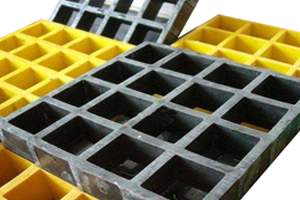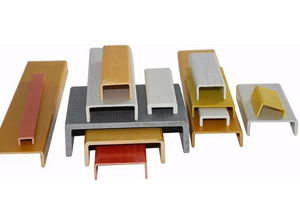Pipeline disconnection potential measurement is an important step to ensure the safe operation of pipelines, which helps to assess the corrosion condition of pipelines, predict possible failures, and take timely maintenance measures. This paper will detail the methods, steps and precautions for pipeline break potential measurement to help readers better understand and apply this technique.
I. The basic principle of pipeline break potential measurement
Pipe break potential measurement is based on electrochemical principles. When a metal pipe is in contact with an electrolyte solution (e.g., soil, water, etc.), an electrochemical corrosion cell is formed. By measuring the potential difference between the pipe and the electrolyte solution, the corrosion state of the pipe can be assessed. Typically, the lower the break potential, the more severe the corrosion of the pipe.
Second, the steps of pipeline power failure potential measurement
1. Select a suitable measurement point: When selecting the measurement point, the joints and welds of the pipeline should be avoided, which may affect the position of potential measurement. At the same time, the measurement point should be as far away as possible from external sources of interference, such as power lines, electrical equipment, etc. 2.
2. Preparation of measuring equipment: Pipeline power failure potential measurement requires the use of specialized measuring equipment, such as potentiometers, reference electrodes, etc. Before measurement, the equipment should be checked. Before measurement, the state of the equipment should be checked to ensure that it works properly.
3. Connect the measuring equipment: connect the positive and negative poles of the potentiometer to the pipe and the reference electrode respectively, and make sure the connection is firm and reliable. The reference electrode should be inserted into the soil to maintain contact with the pipe.
4. Perform measurement: After confirming that the equipment is connected correctly, start measuring the potential difference between the pipe and the reference electrode. Record the measurement results and pay attention to observe whether the display of the potentiometer is stable.
5. Data analysis and interpretation: According to the measurement results, analyze the corrosion status of the pipeline. Generally speaking, when the disconnection potential is lower than a specific value, it may indicate that the pipeline has a more serious corrosion problem. It is necessary to make a comprehensive assessment according to the actual situation, combined with other detection means.
All power supplies affecting the pipe ground potential should be synchronized on and off
Measurement of pipeline cut-off potential, all the influence of the point of the pipe ground potential of the power supply should be synchronized off, especially those output current is relatively large, the influence of a wide range of potentiostat. The usual practice is to synchronize with the GPS current breakers connected in series in the cathodic protection power cathode or anode circuit. At the moment of power failure, especially near the cathodic protection station, the tube ground potential sometimes has a positive pulse. In order to avoid the influence of the pipe ground potential pulse on the measured value of the disconnection potential, the disconnection potential should be read within 0.3~0.5s after the disconnection. If the pipe power-off potential is read with a multimeter, it is difficult to find the pulse.
Effect of stray currents on pipeline disconnection potentials
1) The effect of DC stray current
When the pipeline is interfered by DC stray current, it is not possible to measure the disconnection potential of the pipeline by power on and off.
2) Influence of directly connected sacrificial anode
When the sacrificial anode is directly connected with the pipeline underground, it is not possible to measure the disconnection potential of the pipeline by power on/off method.
3) The influence of AC polarity discharger
When AC current polarizer is installed on the pipeline, it is not possible to measure the power-off potential of the pipeline in the way of power on and off. Polarizer has a rectification effect on the alternating current, will produce a half-wave rectified DC current from the ground electrode through the soil to the pipeline, resulting in a negative shift in the ground potential.
4) DC decoupler effect
DC decoupler capacitance charging and discharging will lead to power-off potential measurement error. When the pipeline is energized, DC decoupler capacitance charging, when the pipeline is de-energized, DC decoupler capacitance discharge, the current will flow to the pipeline, affecting the pipeline power-off potential measurement. When the DC decoupler capacitance is small, AC voltage drop is large, and unidirectional conduction device has unbalanced voltage conduction value (or grounding electrode material and pipeline has a large DC potential difference, such as copper bare wire grounding electrode), DC decoupler will also have the role of AC rectification, affecting the accuracy of the measurement of the power-off potential.
Third, the pipeline power-off potential measurement considerations
1. Ensure the safety of the measurement environment: in the pipeline power-off potential measurement, should ensure the safety of the measurement environment. Avoid measuring in bad weather, high temperature, humidity and other environments, so as not to affect the accuracy of the measurement results. 2.
2. Follow the operating procedures: When measuring the pipeline cut-off potential, it should be carried out in strict accordance with the operating procedures. Avoid damage to the equipment or distortion of the measurement results due to improper operation. 3.
3. Pay attention to the measurement error: the measurement of pipeline cut-off potential is affected by many factors, such as soil resistivity, temperature, humidity, etc. Therefore, attention should be paid to the measurement process. Therefore, attention should be paid to minimize the error in the measurement process and improve the accuracy of the measurement results. For example, random errors can be reduced by taking the average of several measurements; calibrate the equipment before measurement to reduce systematic errors.
4. Comprehensive consideration of a variety of factors: pipeline disconnection potential measurement is one of the important means of assessing the corrosion status of pipelines, but not the only means. In practice, it should be combined with other inspection means (such as appearance inspection, coating thickness measurement, etc.) for comprehensive assessment, in order to more fully understand the corrosion status of the pipeline.
5. Timely handling of abnormalities: If abnormalities (such as abnormal fluctuations in potential, equipment failure, etc.) are found during the measurement process, they should be handled in a timely manner. If necessary, the measurement should be stopped and seek professional help to ensure the accuracy and safety of the measurement results.
In conclusion, pipeline power failure potential measurement is one of the important measures to ensure the safe operation of pipelines. By understanding and mastering the basic principles, steps and precautions of pipeline disconnection potential measurement, we can better assess the corrosion condition of pipelines, predict possible failures and take timely maintenance measures, so as to ensure the safe operation of pipelines.




